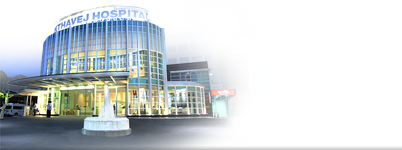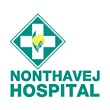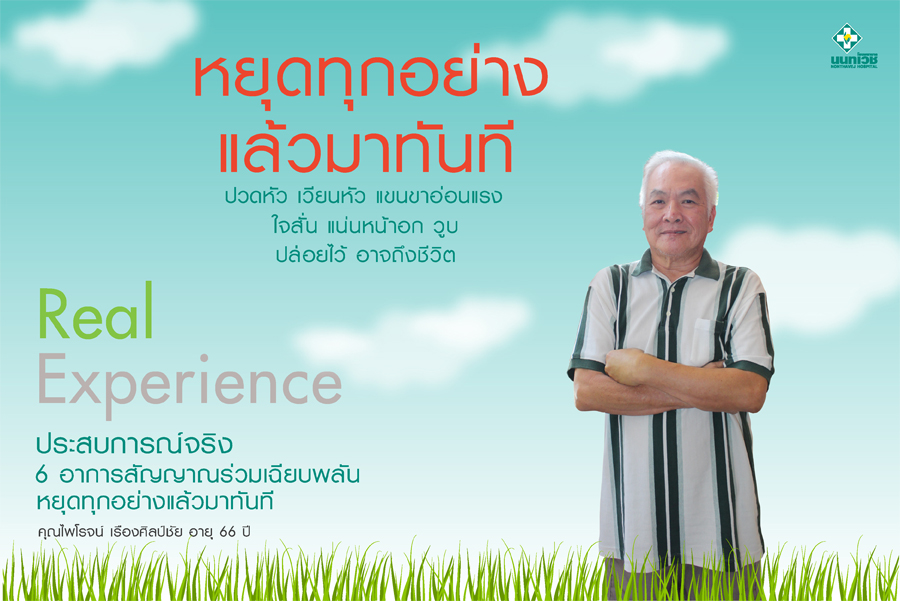
- Testimonials from patients
- Six acute symptoms of stroke
- According to Mr. Pairoj Ruangsilchai’s experience
That day I spent around 9 hours from Bangkok to Ranong in an air-conditioned bus. I arrived in Ranong at about 6.00a.m. I had left limb weakness, dizziness and nausea, but no vomiting. I tried to walk to the inside of the passenger terminal, and my son who waited there for picking me up called an ambulance to bring me to the nearest hospital. The results of the CT Scan Brain showed that I had a stroke, so my family decided to refer me to Nonthavej hospital right away, as I had a medical history there and my symptoms were serious; it might be too late if we had just left it to the local hospital to observe the symptoms.
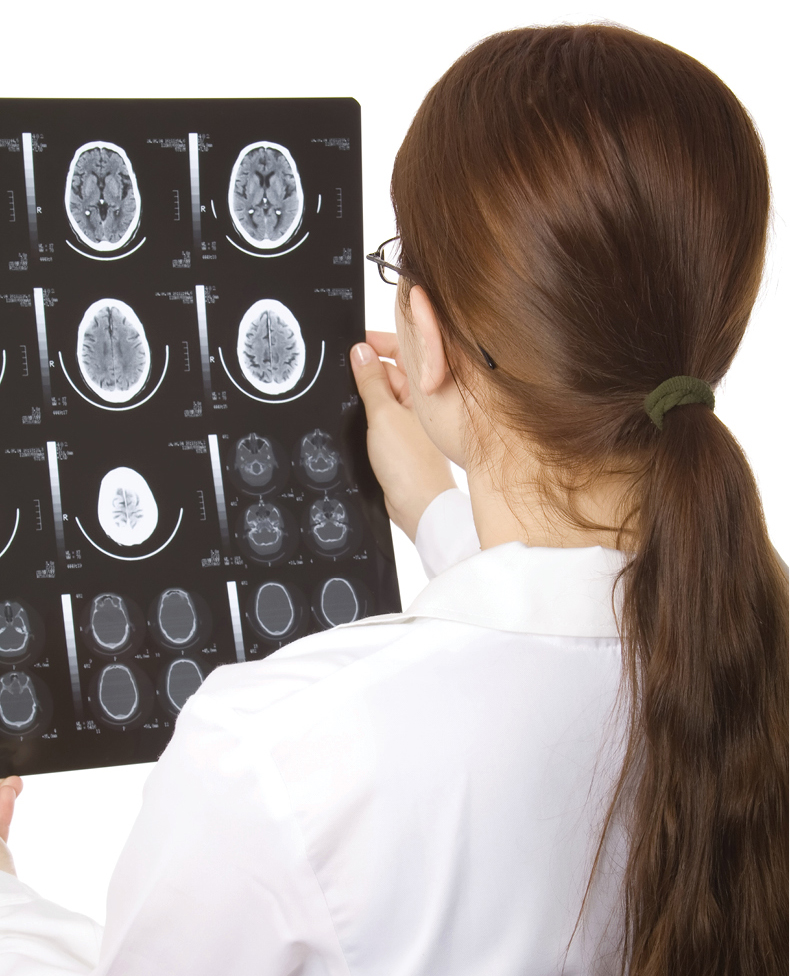
I arrived in the hospital at 8.00 pm, with both my left arm and leg being very weak. I had a MRI scan immediately in order to check for cerebrovascular disorders. But the MRI scan showed normal brain blood vessels. So the doctor at the Comprehensive Neurology Center looked for other possible causes, as I exercise regularly which lowers the risk for strokes. My doctor, Dr.Sirichai, sent me to the Heart Center, as my symptoms was probably caused by heart disorder.
The results of an Echocardiography with a probe were normal. Therefore, the doctor diagnosed by inserting a diagnostic tool into the esophagus (Transesophageal echocardiogram), because this method puts the diagnostic tool very close to the heart without blocking the image by any organs, but the doctor could not find anything abnormal anyways. Afterwards, the doctor decided to diagnose with injection of a micro bubble to the vein in order to find out if some air is leaking between the right and the left atrium. Finally the doctor found that I had a small defect on the heart wall between the right and the left atrium. This case is found only in 10% of patients, and the doctor explained that the function of the heart in blood circulation is to pump blood to carry oxygen and nutrients to supply the body. The right chamber heart gets the used blood and pumps it to the lungs in order to get oxygen, then blood with oxygen will return to the left chamber of the heart, and be pumped through the aorta to supply all parts of the body. But in my case, because I sat in the same position for a long time for more than 9 hours from Bangkok to Ranong, some blood clot occurred in the leg veins and the blood clot flowed to the right chamber of the heart and crossed into the left chamber via the small defect on the heart wall, which affected me with acute numbness in the left side of body. The doctor also explained further that I could have acute numbness, limb weakness, and dizziness symptoms again if some blood clot occurred in the blood circulation and the clot moved through the defect to the head. This problem can be by closing the defect.
The doctor gave me advice, using the images of my heart showing the site of the defect in my heart wall, and how the clot moved into the head, on how to treat this problem. It was easy to understand and I also got very nice support from my children. Thus I decided to get treatment with inserting a device similar an umbrella to block the defect in my heart wall without any worries. After the treatment, I stayed in the hospital for about one month to get physical therapy, and then I returned to stay at home. The doctors followed-up my treatment and appointed me for getting physical therapy continuously. Currently I am healthy, no numbness and dizziness anymore.
I was lucky that the doctors took very good care of me, explained everything in a way that was simple to understand, including the causes of problem and also how to treat the problem. I could ask them anytime when I had questions, and I was never afraid to get treatment. The doctors also consulted another specialist about my problem to in order to treat me for the right disease and to cover all diseases that might occur.
Medical comments of Dr. Sirichai Kittichanteera,MD. Neurologist at Comprehensive Neurology Center
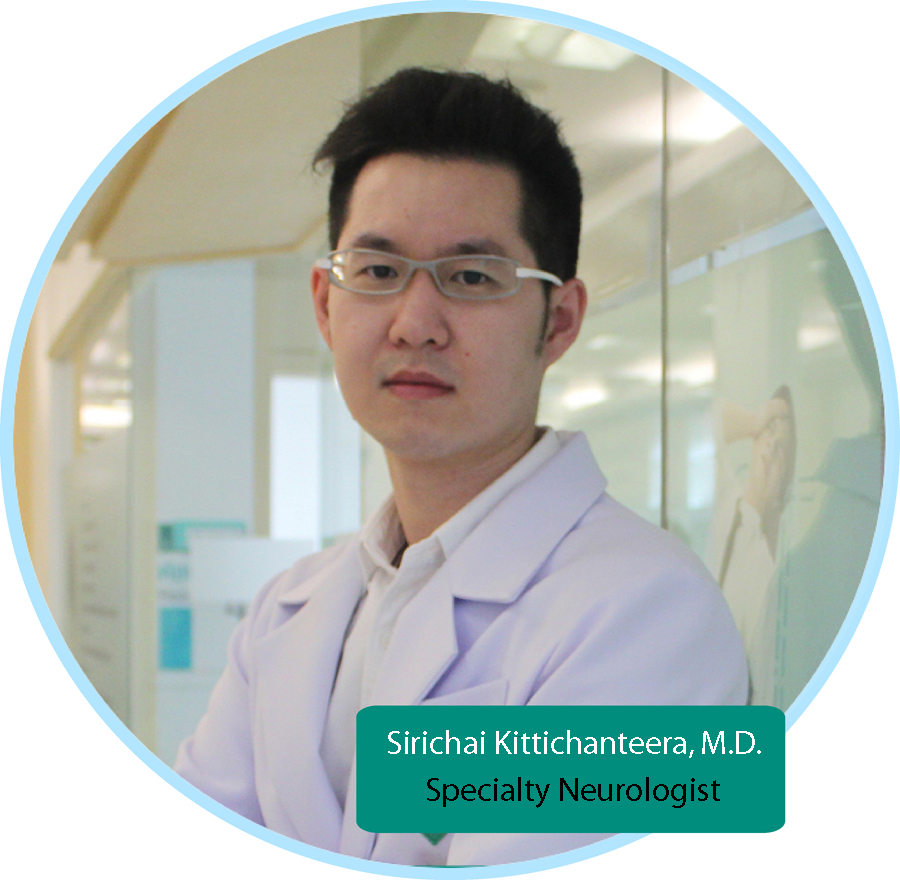
The patient was admitted with acute left limbs weakness, dizziness, vertigo, nausea, but no vomiting. The result by Magnetic Resonance Angiography: MRA Brain shown normal cerebrovascular activity. So we looked for other possible causes by referring him to a cardiologist who finally found that he had Atrial Septal Defect. The cardiologist treated the problem by closing the defect in order to prevent the recurrence of stroke from a thrombosis. We also treated a stroke simultaneously, because the condition of this was past the Golden Period or 4.5 hours, which meant that we could not treat him with thrombolysis medicine. We treated him with anti-platelet drugs (aspirin) to reduce the chance for the recurrence of ischemic stroke, and to minimize the risk of complications and fatality. The factors that helped the patient getting better and recover quickly, was that he had regular physical therapy and received very good care by the medical team, both neurologist and cardiologist.
Medical comments of Dr. Ray Sriratana Tabucanon,M.D. Cardiologist at Heart Center
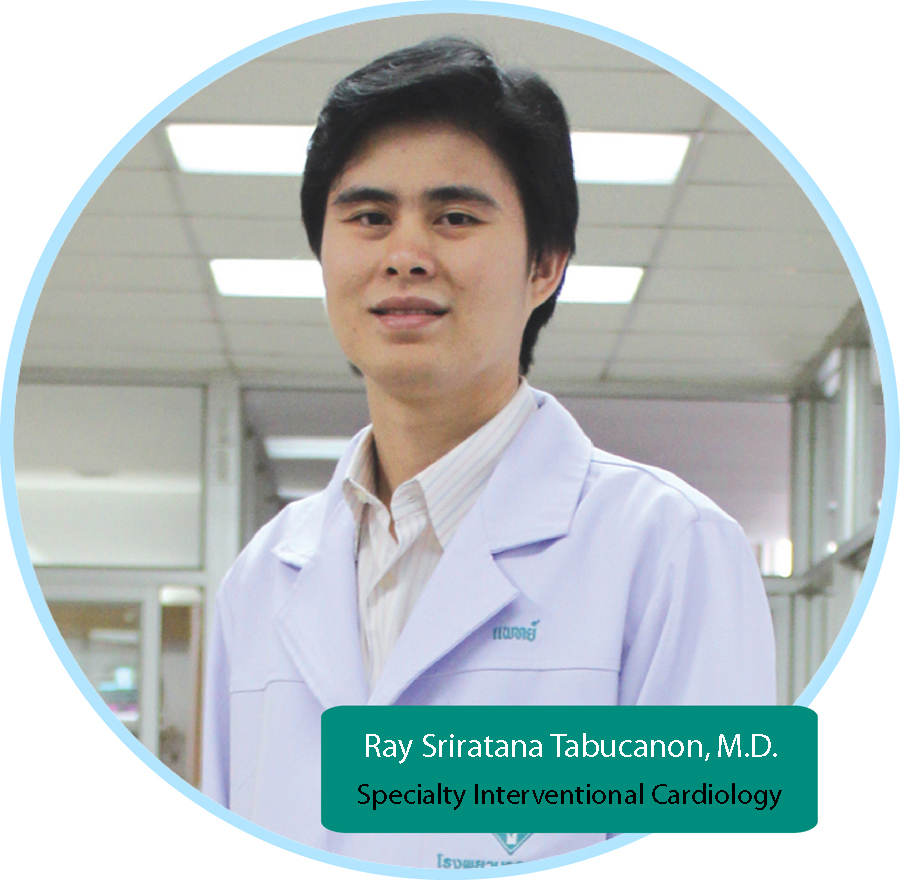
This case was quite complicated. His symptoms are called “Cryptogenic Stroke”, which means normal cerebrovascular activity, no condition with thrombosis and arrhythmias, but he still had signs of a stroke. According to the result of the Transesophageal echocardiogram: TEE and injection of a Micro Bubble into the vein, it was discovered that the patient had Patent Foramen Ovale: PFO, or a defect in the septum (wall) between the two upper (atrial) chambers of the heart. This defect exists in everyone before birth and normally closes during infancy, but there are 10% of males where the defect never closes. However, there are a number of people (about 1 in 10) for whom the hole does not close completely, as in this case. We closed the defect without surgery by a procedure called cardiac cathertization with implants a PFO Occluder, which looks like a two-sided umbrella, into a vein in the groin area through to the right heart chamber and crossed to the left chamber to plug the defect in order to prevent the recurrence of a stroke from a blood clot. The medical team spent about half an hour of plugging the defect. The results of the treatment were satisfactory, and the patient got better step by step.

